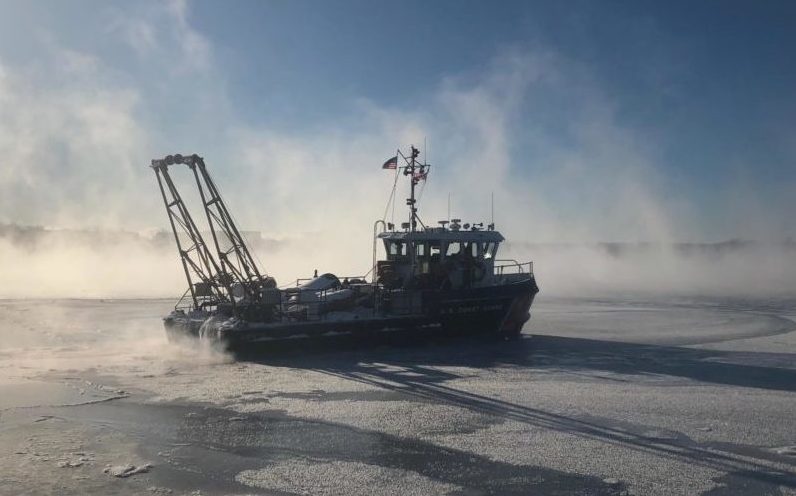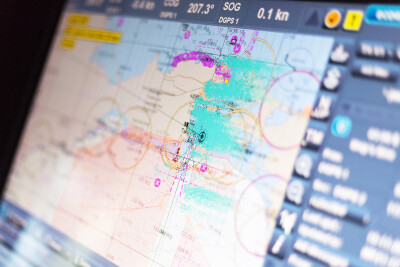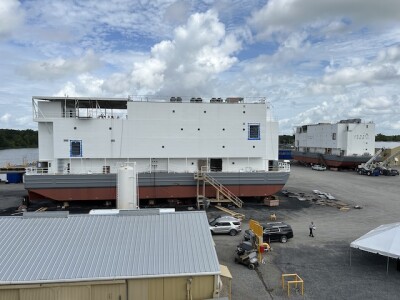Coast Guard officials expect a steady demand for icebreaking services in the Northeast, as ice conditions extending south into Chesapeake Bay hampered maritime workers and passenger ferries.
In New York City, the public NYC Ferry was able to resume its normal East River, South Brooklyn and Astoria routes Tuesday. But with heavy icing at the Rockaway landing, the longest route to that Queens seaside neighborhood remained suspended.
In the harbor’s southern reaches, heavy ice in Sandy Hook and Raritan bays forced NY Waterway to suspend Tuesday service to the city from Belford, N.J. At nearby Atlantic Highlands, SeaStreak contracted tugboats to assist with icebreaking and keep a channel open for its big 505-passenger vessels, but warned of delays and longer travel times.
In the upper harbor on Sunday, McAllister Towing and Transportation Co. dispatched one of its tugs to assist the New York Police Department by breaking ice at the NYPD harbor base.
On Delaware Bay, the Cape May-Lewes Ferry service remained suspended with heavy icing at its Cape May, N.J. terminal. Service was suspended with the approach of the Jan. 4 blizzard, and remained so with increasing ice conditions. Delaware River and Bay Authority officials are hoping to resume service this week as sunny days nudge air temperatures past 40 degrees.
In Maine, the Coast Guard started breaking ice on the Penobscot River in mid-December, and expanding the effort as part of its Operation Reliable Energy for Northeast Winters (RENEW).
“It is definitely an earlier start to the season than we've seen the last two years,” said Capt. Michael Baroody, commander of Coast Guard Sector Northern New England. “After a couple of relatively mild winters, we expect that our cutters will be extremely busy for the foreseeable future.”
Based on the number of ice breakers in New England, the Coast Guard has to prioritize any requests for ice breaking assistance. Those top priorities are keeping Coast Guard search and rescue stations capable of responding to emergencies, aiding vessels beset in ice, and helping island communities receive fuel, food, and medical supplies by water. The Coast Guard will also break ice to facilitate the safe navigation of cargo ships and tankships, passenger ferries, and commercial fishing vessels.
Three 65’ small harbor tugs, capable of breaking up to 12” of ice, are homeported in Maine: the Bridle out of Southwest Harbor, the Tackle out of Rockland, and the Shackle out of South Portland.
“It is always a challenge for the Coast Guard to meet ice breaking demands during severe winters”, said Baroody. “It's critical for mariners to closely track weather and local ice conditions, to preemptively move their vessels that may be at risk of getting iced-in if it's safe to do so, and to give us as much notice as possible if they need to be broken out.”
All requests for Coast Guard ice breaking in Maine and New Hampshire should be directed to the Sector Northern New England Command Center at (207) 767-0303.





